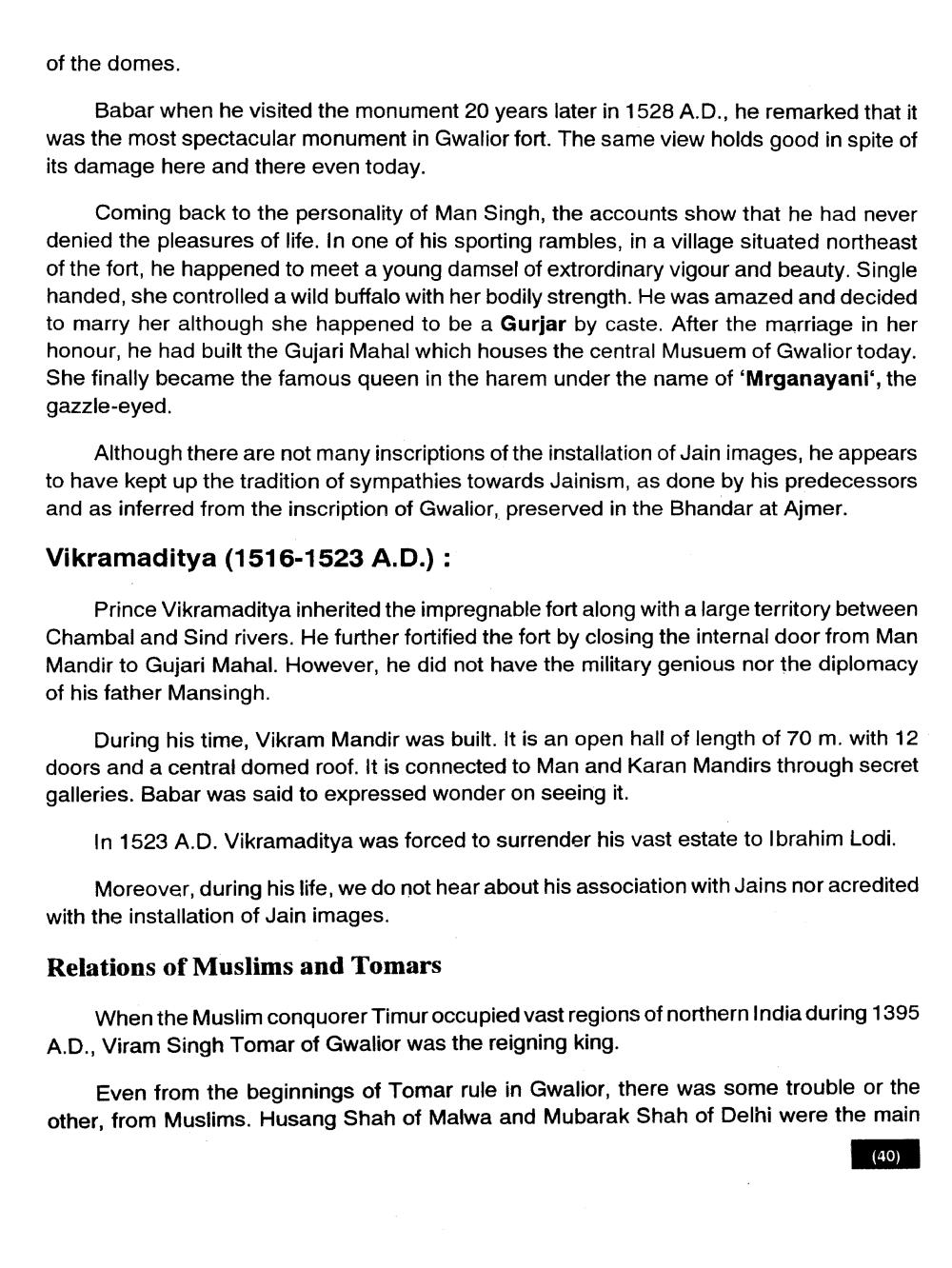________________
of the domes.
Babar when he visited the monument 20 years later in 1528 A.D., he remarked that it was the most spectacular monument in Gwalior fort. The same view holds good in spite of its damage here and there even today.
Coming back to the personality of Man Singh, the accounts show that he had never denied the pleasures of life. In one of his sporting rambles, in a village situated northeast of the fort, he happened to meet a young damsel of extrordinary vigour and beauty. Single handed, she controlled a wild buffalo with her bodily strength. He was amazed and decided to marry her although she happened to be a Gurjar by caste. After the marriage in her honour, he had built the Gujari Mahal which houses the central Musuem of Gwalior today. She finally became the famous queen in the harem under the name of 'Mrganayani', the gazzle-eyed.
Although there are not many inscriptions of the installation of Jain images, he appears to have kept up the tradition of sympathies towards Jainism, as done by his predecessors and as inferred from the inscription of Gwalior, preserved in the Bhandar at Ajmer.
Vikramaditya (1516-1523 A.D.):
Prince Vikramaditya inherited the impregnable fort along with a large territory between Chambal and Sind rivers. He further fortified the fort by closing the internal door from Man Mandir to Gujari Mahal. However, he did not have the military genious nor the diplomacy of his father Mansingh.
During his time, Vikram Mandir was built. It is an open hall of length of 70 m. with 12 doors and a central domed roof. It is connected to Man and Karan Mandirs through secret galleries. Babar was said to expressed wonder on seeing it.
In 1523 A.D. Vikramaditya was forced to surrender his vast estate to Ibrahim Lodi.
Moreover, during his life, we do not hear about his association with Jains nor acredited with the installation of Jain images.
Relations of Muslims and Tomars
When the Muslim conquorer Timur occupied vast regions of northern India during 1395 A.D., Viram Singh Tomar of Gwalior was the reigning king.
Even from the beginnings of Tomar rule in Gwalior, there was some trouble or the other, from Muslims. Husang Shah of Malwa and Mubarak Shah of Delhi were the main
(40)




